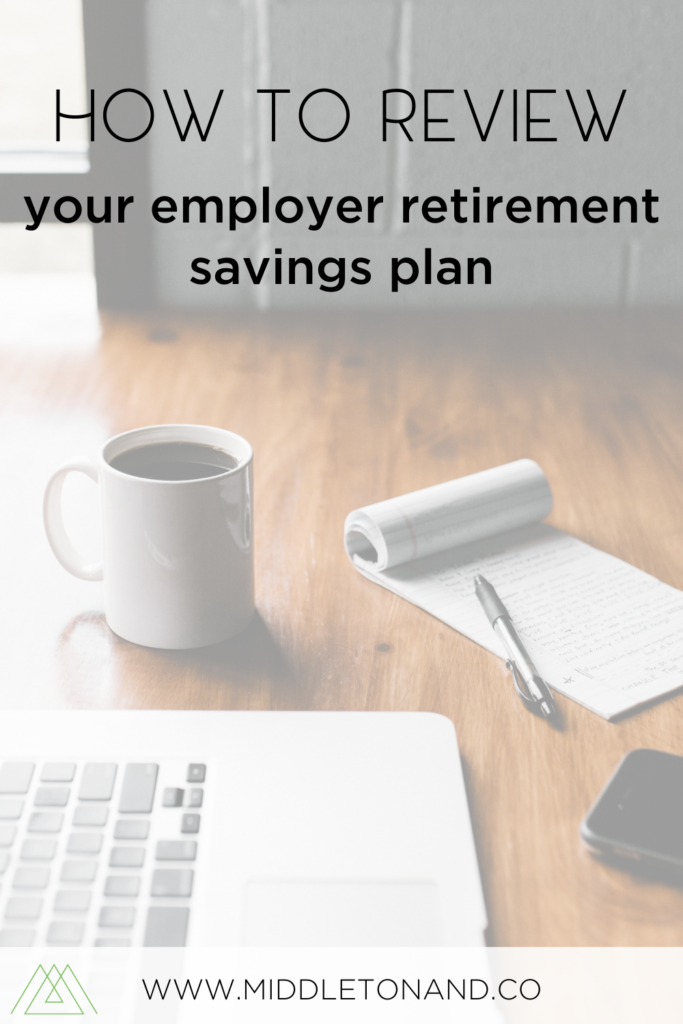The beginning of the year is a great time to review your contributions to your employer’s retirement savings plan because it’s when the annual contribution limits reset. It’s also often when any raises go into effect. And you’re in a new tax year.
But how can you properly review it? Here are some things to look for:

Take into consideration your new salary
The contribution amount is typically stated in percentage rather than dollar, so if your salary has changed since last year, you may want to ratchet the percentage up or down for this tax year
Don’t make the maximum annual employee contribution too early
If you are planning to make the maximum annual employee contribution ($20,500 for 2022), now is a good time to look closely at your company’s retirement plan documents to see if the employer contribution is a match or a flat contribution.
Why? If you hit your annual employee max contribution too early in the year, you may be missing out on the employer contribution if it is a MATCH. The employer can only make a contribution during a pay period in which there is an employee contribution, so if you hit the annual maximum contribution in June because you’ve elected to withhold a really high percentage of your salary, then you may be leaving some money on the table
Pre-tax vs. Roth contributions
It’s becoming more common to see after-tax or Roth options in employer retirement plans. Now is a great time for you to reevaluate what type of contribution you want to make for this tax year
Note: it doesn’t have to be the same as what you’ve done in previous years
But which one to choose?
- Pre-tax contributions are great if you are trying to reduce your taxable income for the current tax year. Reasons you might want to do this:
- state income tax (like Oregon residents), especially if there is a possibility that you may live in a different state with no income tax at the time that you plan to start taking distributions from the account
- You expect more income from other sources. A couple of examples might include if you plan to sell a rental property, or you expect to have high capital gains due to vesting employer stock options
- Roth contributions are great for individuals who want to add to an after-tax savings bucket. Reasons you might want to do this:
- You are above the income threshold to make Roth IRA contributions. There is no income limit to Roth 401k contributions
- You are okay paying tax at today’s rates, assuming that you will be in a higher tax bracket in the future. For example, you expect to get promoted in future years
Keep in mind that you can also elect to do a mixture – it’s not one or the other!
If you’re 50 years old or older
How old are you? Are you eligible for catch-up contributions? If you’re age 50 and older can, you save an additional $6500 on top of the maximum annual employee contribution, bringing your total contribution limit for 2022 to $27,000
Active participant of more than one employer plan
Are you an active participant in more than one employer plan? If so, there are some additional limits to be aware of.
- If this is you, make sure you talk with the person in charge of payroll or an HR representative at your company so that these limits are accounted for in your payroll deductions to avoid any excess contributions
- See limits here: https://www.irs.gov/retirement-plans/how-much-salary-can-you-defer-if-youre-eligible-for-more-than-one-retirement-plan
You’re set to review your contributions to your employer’s retirement savings plan! If you need additional help, don’t hesitate to reach out!
Schedule a discovery call now or send us an email at clientservices@middletonand.co
Like this article? Make sure to Pin It so you can go back to it later!



